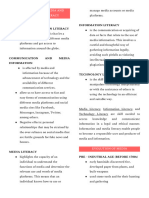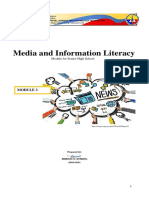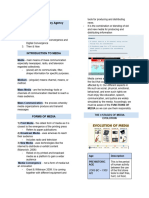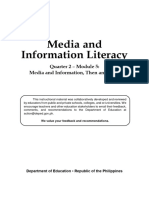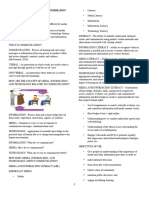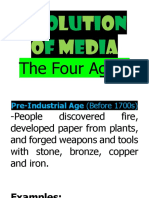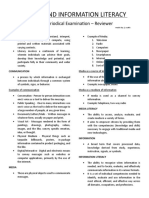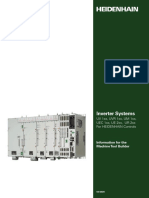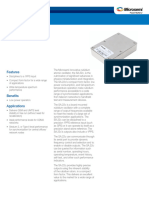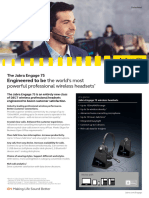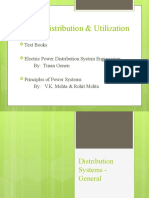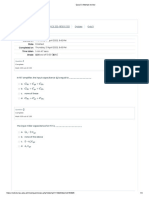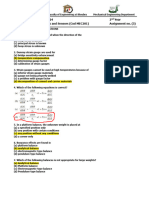Lesson 3: Use of Media and Information
OBJECTIVES:
1. Discuss responsible use of media and information
2. Practice responsible use of media and information
3. Value responsible use of media and information
MEDIA USER
Anyone who has the right gadget, the capability to produce audio-
video clips, still image, and able to upload it to any social media
online
Person that is able to manipulate, enjoy, and satisfy self from the
likes of it
LIMITATION OF HARM
CODE OF ETHICS / CANONS OF JOURNALISM
with holding of certain details from reports, such as
the names of minor children,
crime victims’ names, or
information not materially related to the news report
release of such information might, for example, harm someone’s
reputation
CHARACTERISTICS OF A RESPONSIBLE MEDIA USER
Must be curious
General knowledge
The ability to write
Professionalism
Objective
Should have ethics
� Lesson 4: Evolution of Media
OBJECTIVES: MEDIA TIMELINE
1. differentiate traditional and new Pre-Industrial Age
media; and (Before 1700s)
2. identify the ages of media and - People discovered fire, developed
information evolution and the paper from plants, and forged weapons
devices used by people to and tools with stone, bronze, copper and
communicate with each other, iron.
store information, and broadcast
Examples:
information across the different • Cave paintings (35,000 BC)
ages. • Clay tablets in Mesopotamia (2400 BC)
• Papyrus in Egypt (2500 BC)
• Acta Diurna in Rome (130 BC)
Life has changed dramatically over the • Dibao in China (2nd Century)
past century, and a major reason for this • Codex in the Mayan region (5th Century)
is the progression of media technology. • Printing press using wood blocks (220
AD)
• Smoke Signals
• Trail Markers
TRADITIONAL MEDIA
Industrial Age
Media experience is limited
(1700s-1920s)
One-directional
- People used the power of steam,
Sense receptors used are very
developed machine tools, established iron
specific (sight-print media,
production, and the manufacturing of
hearing-radio, both-TV and film)
various products (including books through
the printing press).
NEW MEDIA
Examples:
Media experience is more • Printing press for mass production
(19th century)
interactive • Newspaper- The London Gazette
Audiences are more involved and (1640)
• Typewriter (1800)
can send feedback simultaneously • Telephone (1876)
Integrates all the aspects of old • Motion picture photography/
projection (1890)
media • Commercial motion pictures (1913)
• Motion picture with sound (1926)
• Telegraph
• Punch cards
• Phonograph
�Lesson 4: Evolution of Media
Electronic Age Augmented Reality / Virtual Reality
(1930s-1980s) • Video chat: Skype (2003), Google
Hangouts (2013)
- The invention of the transistor • Search Engines: Google (1996),
ushered in the electronic age. People Yahoo (1995)
• Portable computers- laptops (1980),
harnessed the power of transistors that netbooks (2008), tablets (1993)
led to the transistor radio, electronic • Smart phones
• Wearable technology
circuits, and the early computers. In • Cloud and Big Data
this age, long distance communication
Benefits of Augmented Reality /
became more efficient.
Virtual Reality
Examples: Enhanced Visualization
• Transistor Radio Global Outreach
• Television (1941) Improved Education Quality
• Large electronic computers- i.e. Better Student Appraisal
Electronic Delay Storage Automatuc Improved Research
Calculator EDSAC (1949) and Learning
Universal Automatic Computer 1
UNIVAC 1 (1951) 4 FUNCTIONS OR ROLES OF MEDIA
• Mainframe computers - i.e. IBM
704 (1960) Channel
• Personal computers - i.e. Hewlett-
Packard 9100A (1968), Apple 1 • provides opportunities for people to
(1976) OHP, LCD projectors communicate, share ideas, speculate,
Information Age (1900s-PRESENT) tell stories, and give information
- The Internet paved the way for faster Watchdog
communication and the creation of the • exposes corrupt practices of the
social network. People advanced the government and the private sector
use of microelectronics with the • creating a space wherein governance
invention of personal computers, is challenged or scrutinized by the
mobile devices, and wearable government. It also guarantees free and
technology. Moreover, voice, image, fair elections
sound and data are digitalized. We are Resource Center
now living in the information age.
• acts as a gateway of information for
Examples: the society’s consumption
• Web browsers: Mosaic (1993), • also, it becomes a keeper of memories
Internet Explorer (1995)
• Blogs: Blogspot (1999), LiveJournal of the community, preserver of heritage
(1999), WordPress (2003) and source of academic knowledge
• Social networks: Friendster (2002),
Multiply (2003), Facebook (2004)
• Microblogs: Twitter (2006), Tumblr Advocate
(2007)
• Video: YouTube (2005) • through its diverse sources or formats,
it bridges the gap of digital divide
� Lesson 5: Types of Media
OBJECTIVES: FILM / CINEMA
It is a series of images, which when
1. Classify contents of different
displayed on screen, create an illusion of
media types
moving images by the phi phenomenon.
2. Define media convergence
through current examples
VIDEO GAMES / DIGITAL
GAMES
PRINT MEDIA
Any of various interactive games
media consisting of paper and
played using a specialized electronic
ink, reproduced in a printing
gaming device or a computer or mobile
process that is traditionally
device and a television or other display
mechanical
screen, along with a means to control
used to be the only way of
graphic images.
delivering information to the
public.
BROADCAST MEDIA MEDIA CONVERGENCE
media such as radio and
television that reach target The co-existence of traditional and new
audiences using airwaves as the media.
transmission medium
communicate or transmit a The co-existence of print media,
signal, a message, or content, broadcast media and the Internet
such as audio or video allowing media content to flow across
programming, to numerous various platforms
recipients simultaneously over a
communication network. The ability to transform different kinds of
media into digital code
NEW MEDIA
content organized and
TECHNOLOGY
distributed on digital platforms
the application of scientific knowledge for
user obtain the material via
practical purposes
desktop and laptop computers,
smartphones and tablets



